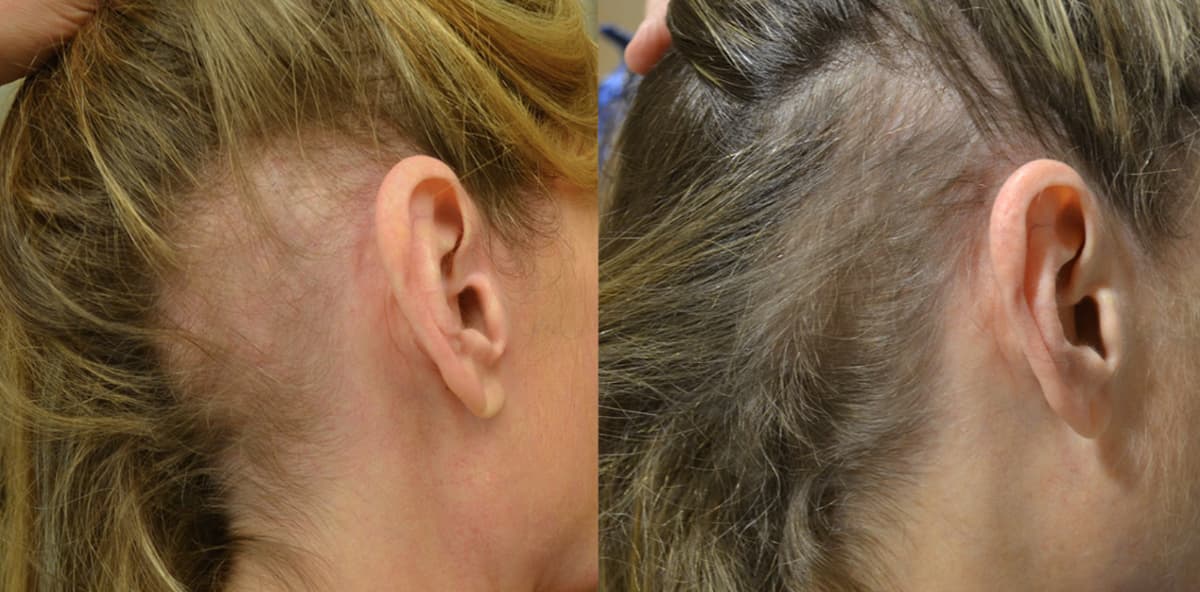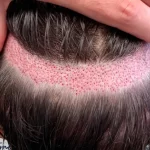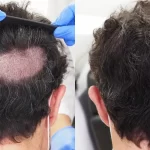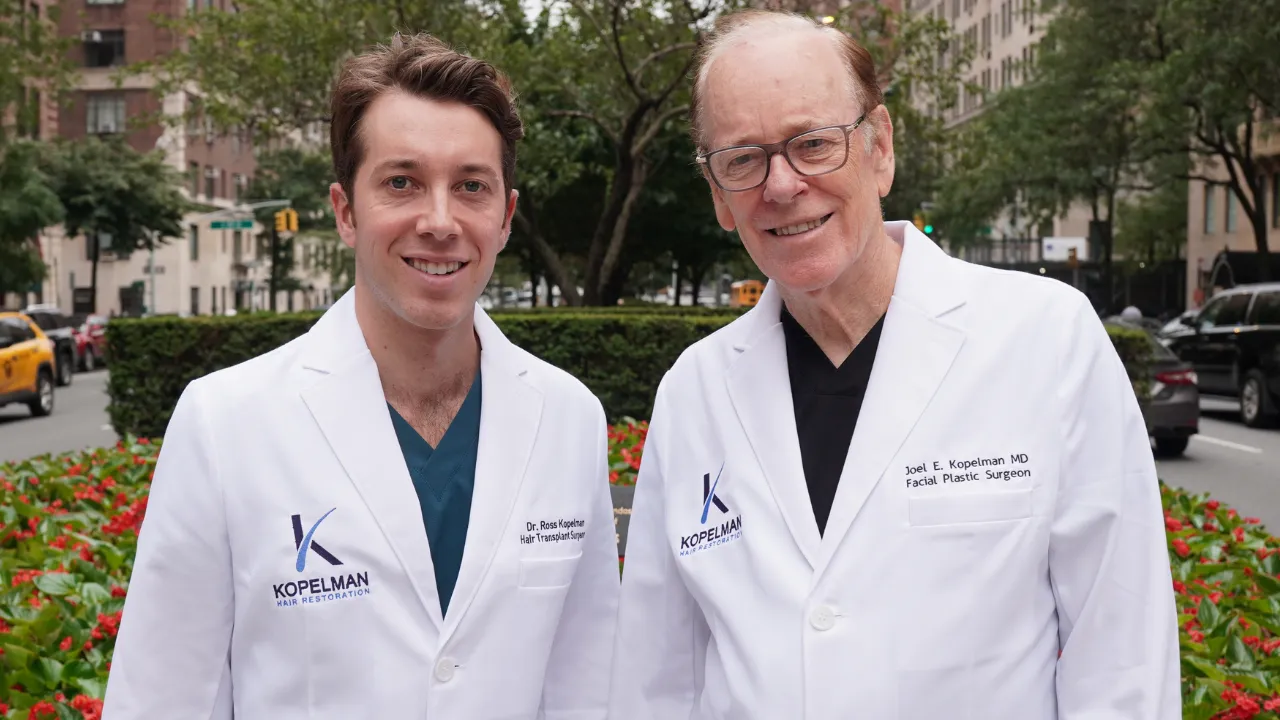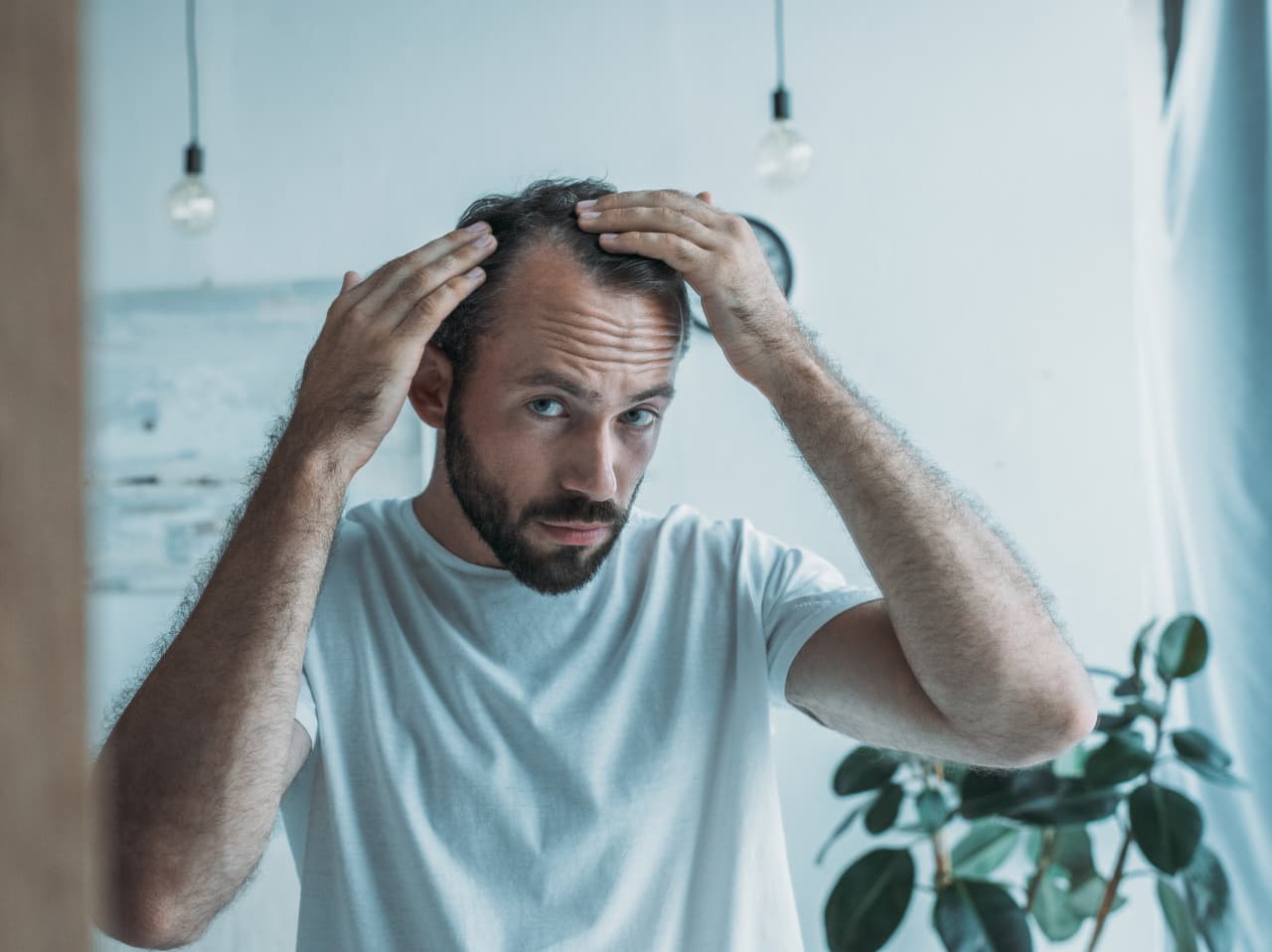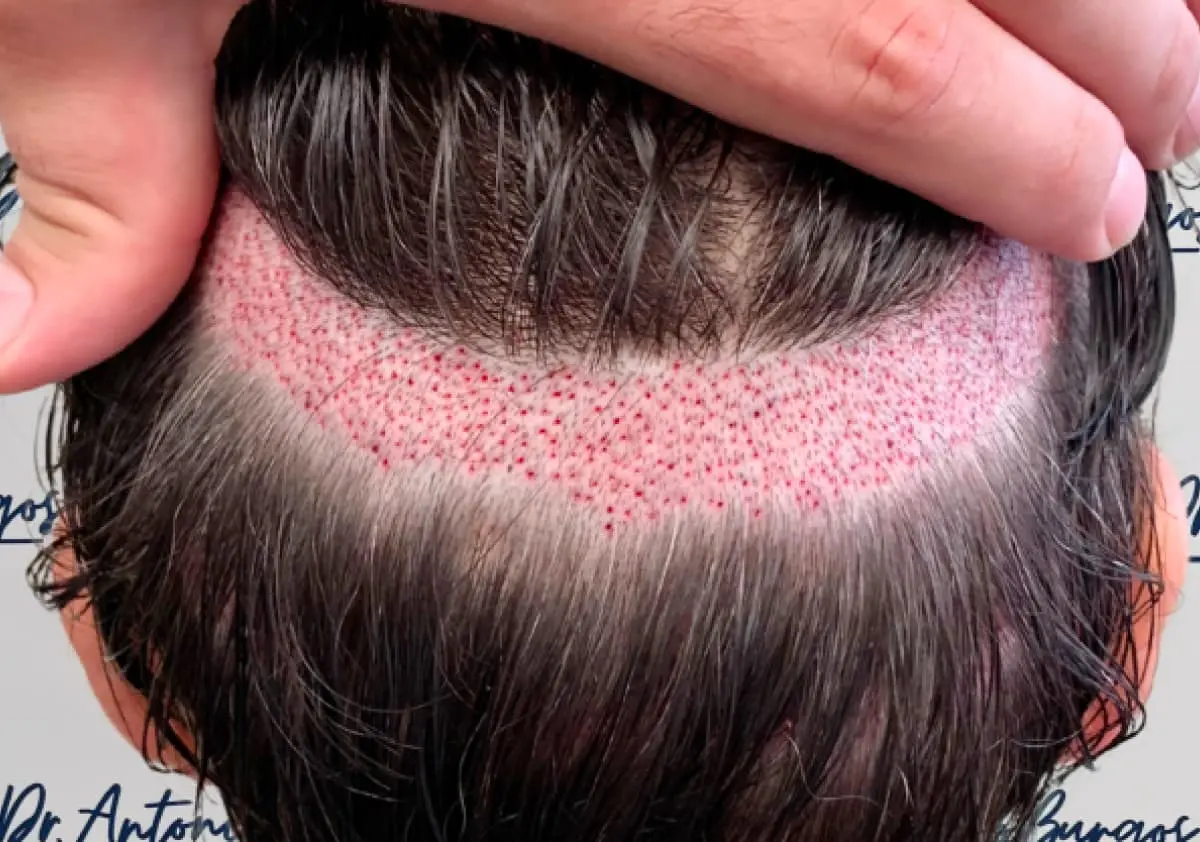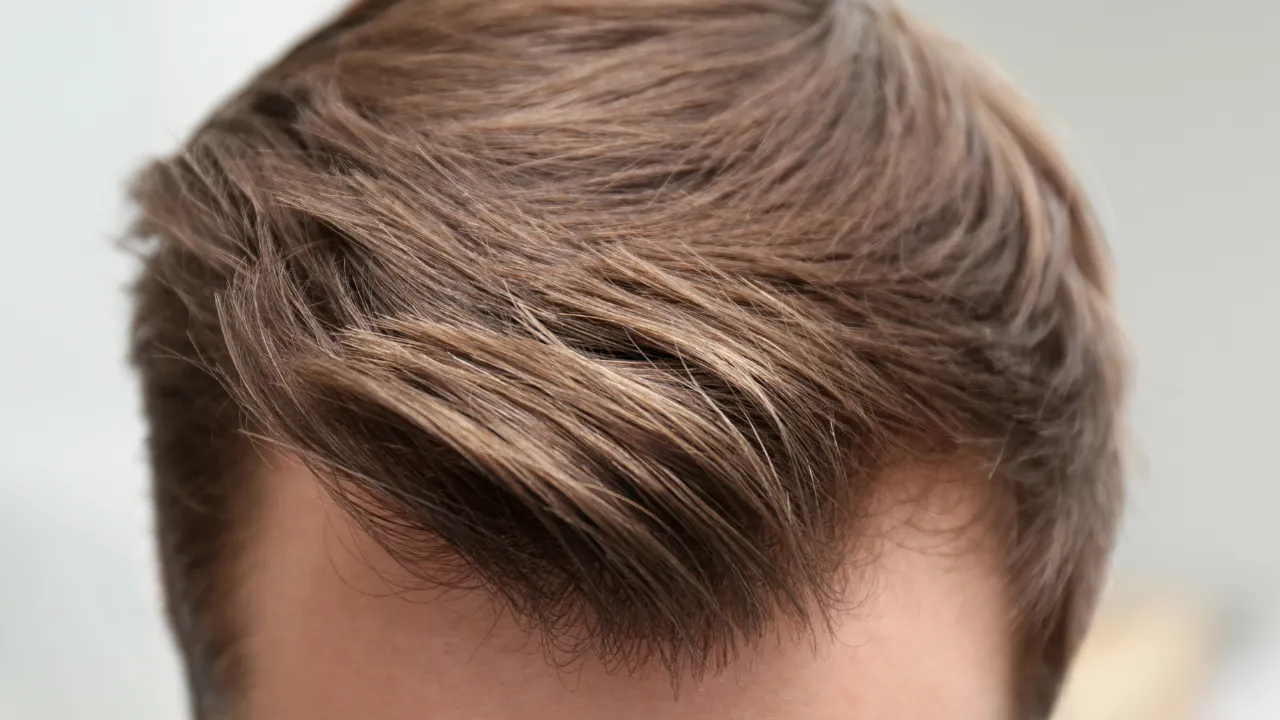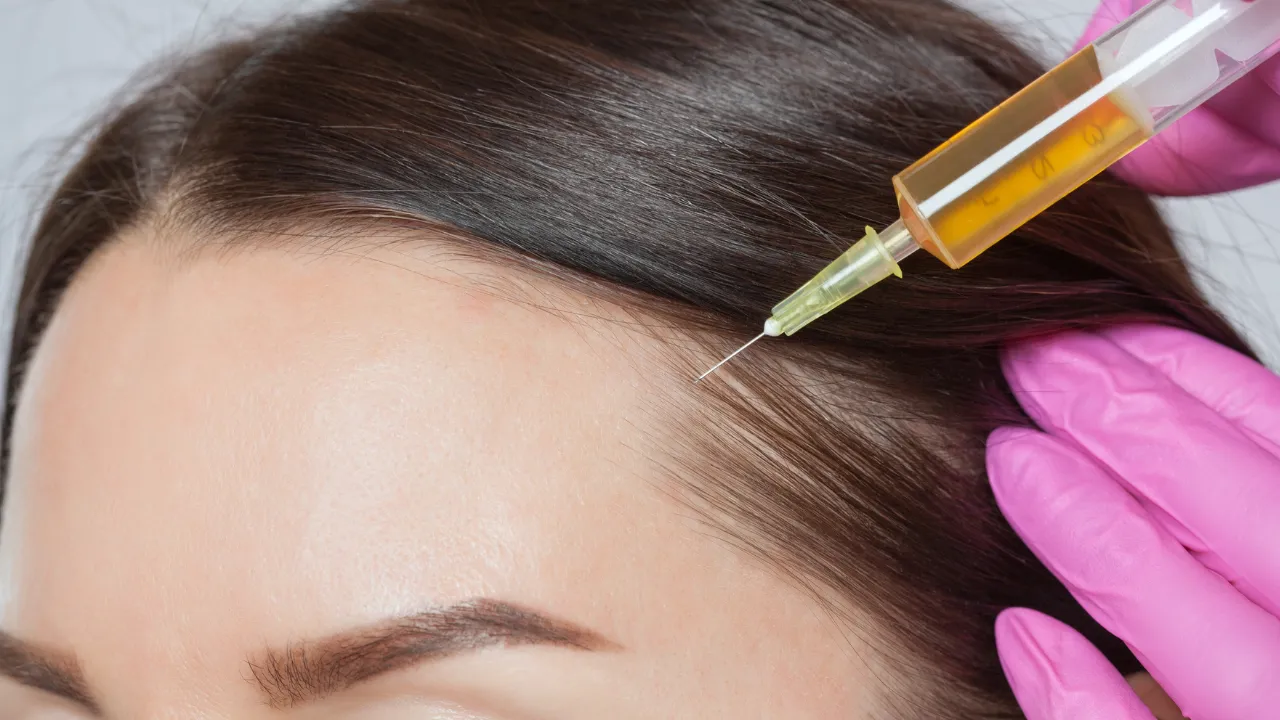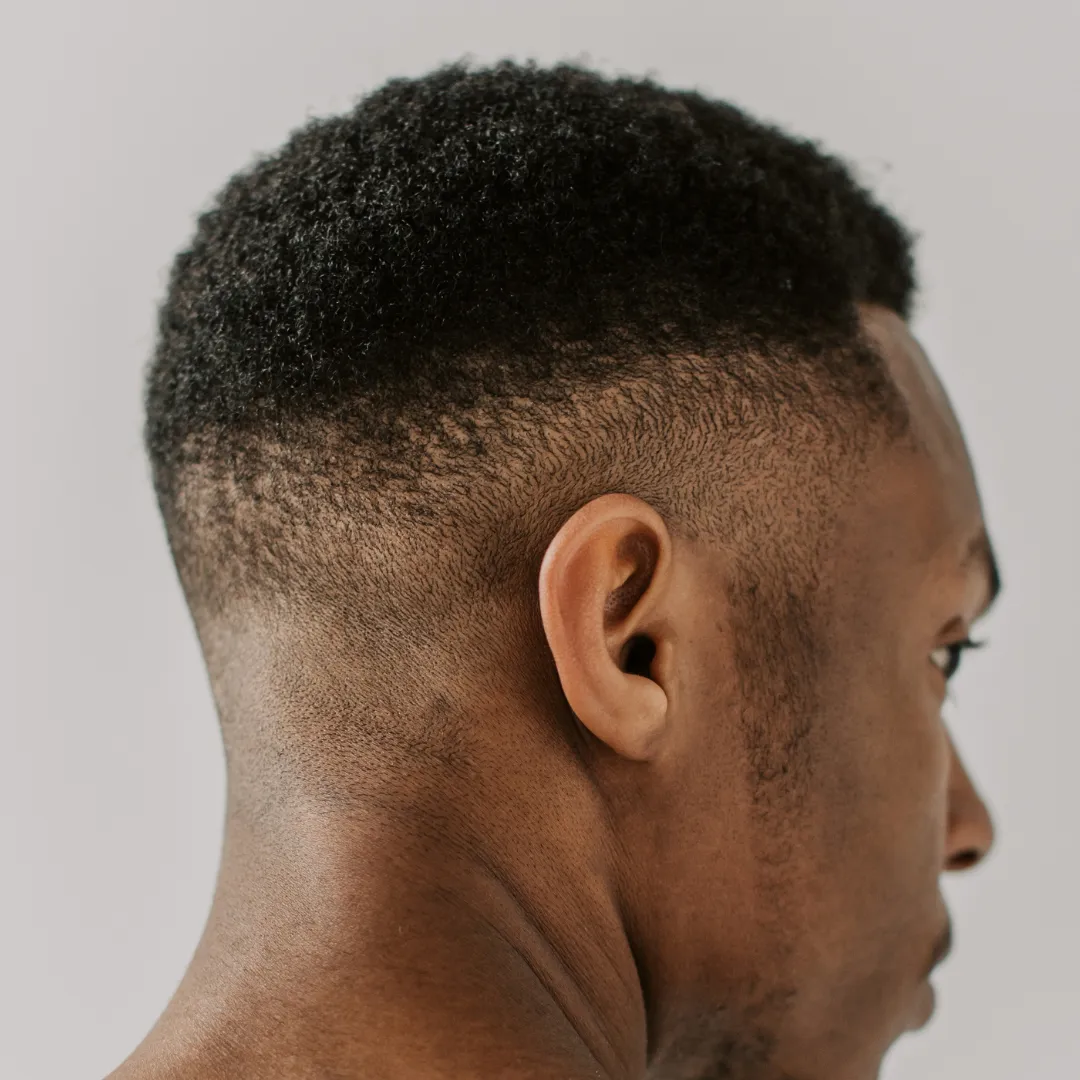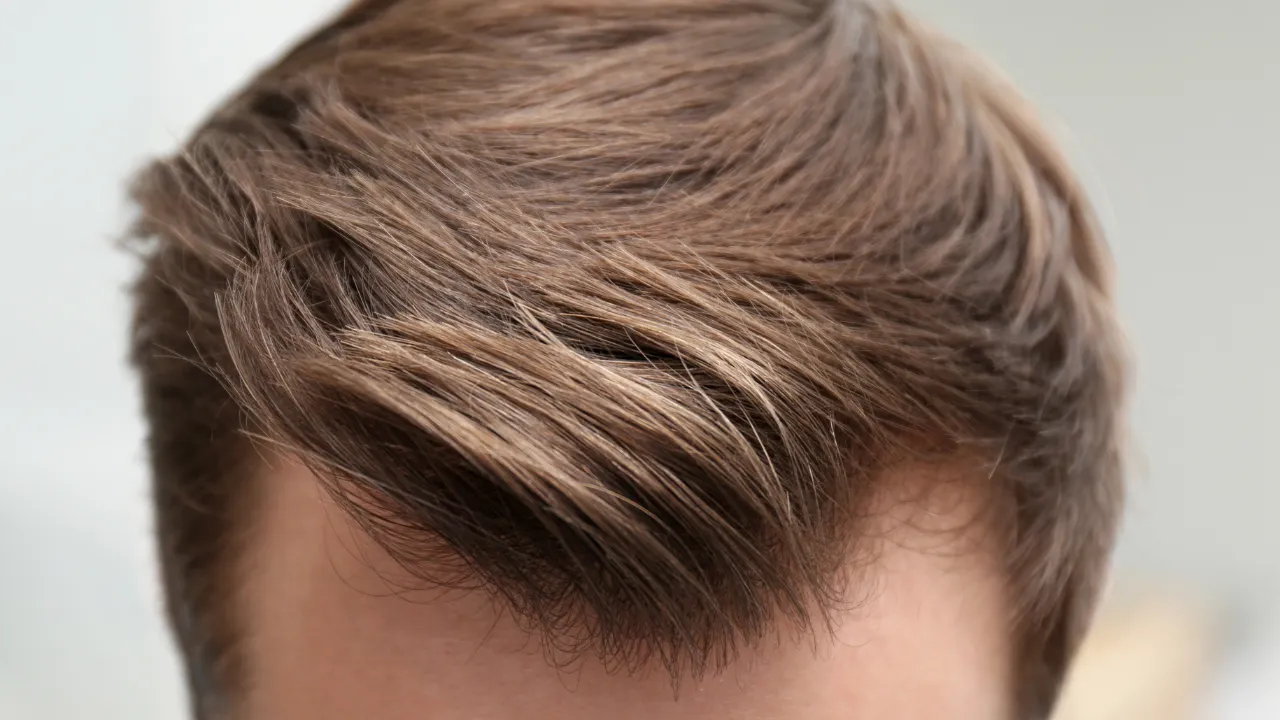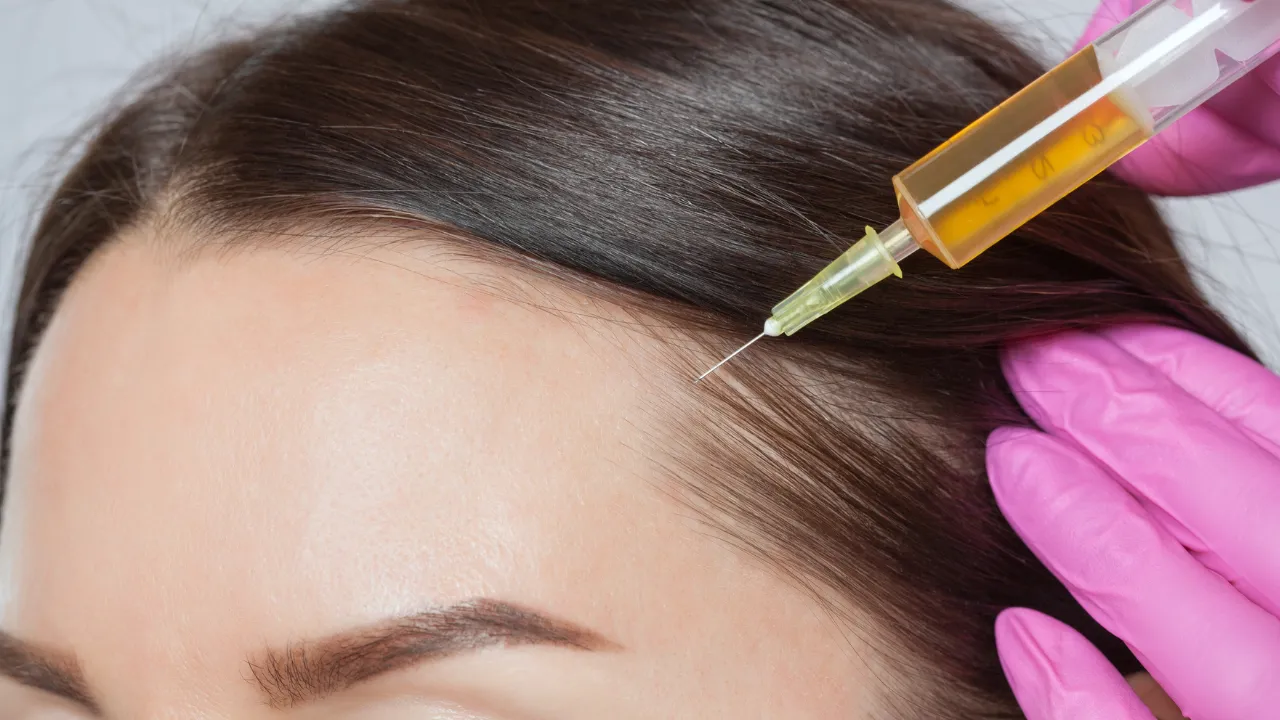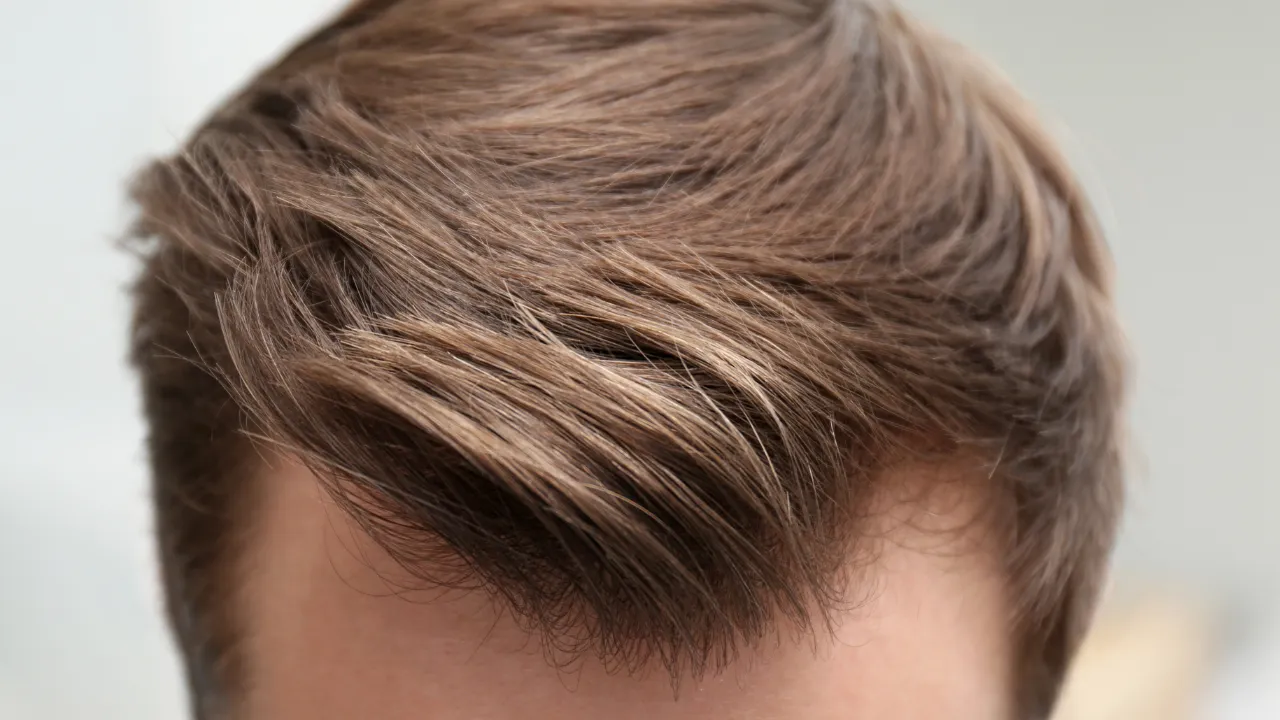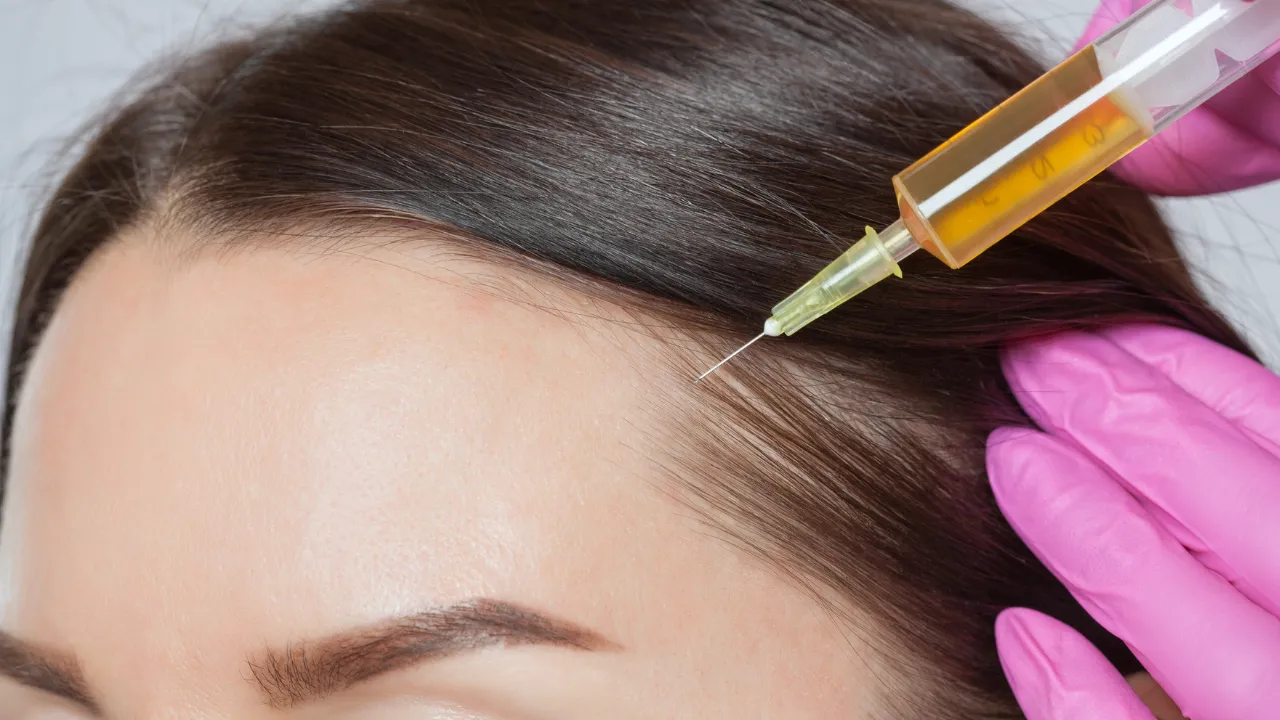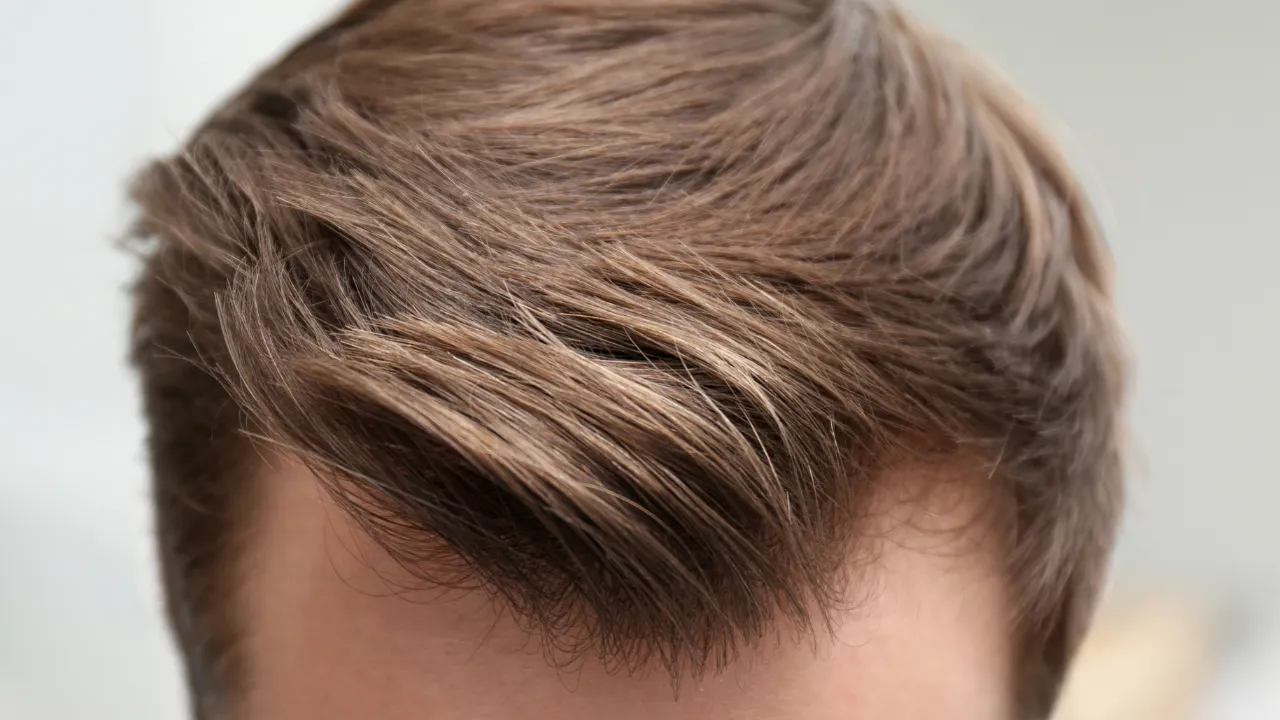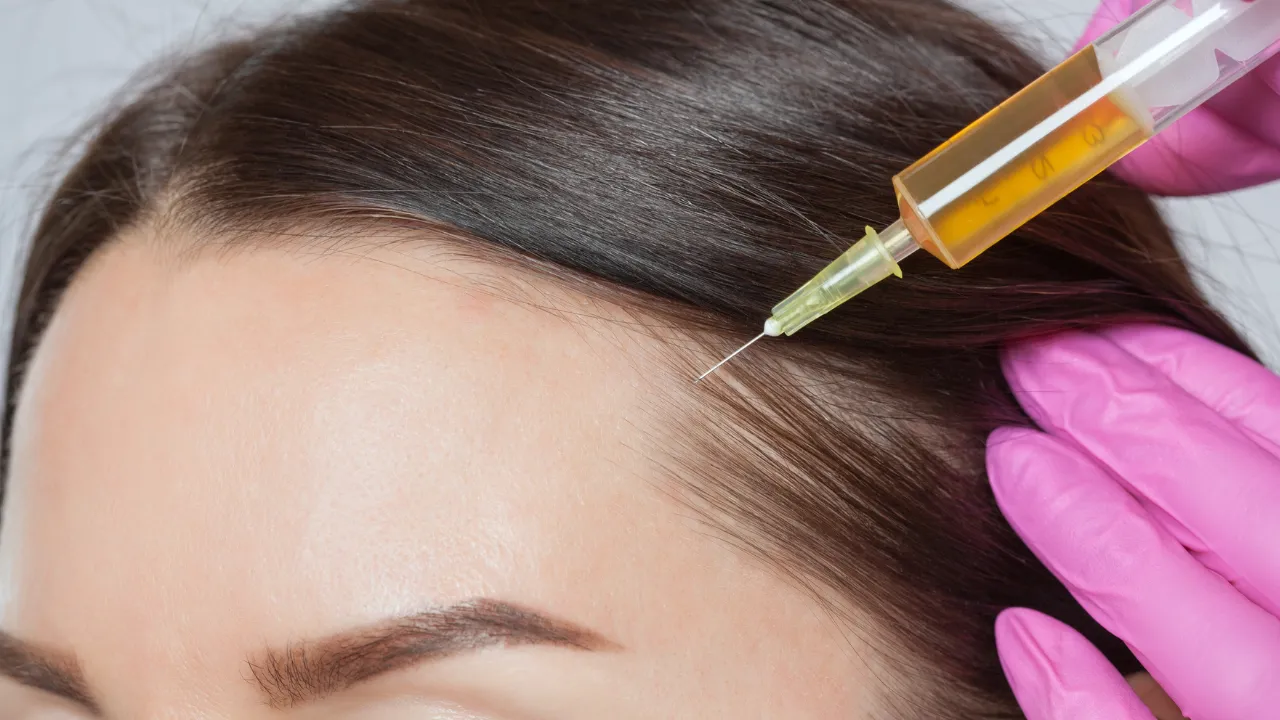Table of Contents
ToggleWomen rarely go completely bald because their hormones and hair structure protect them from major hair loss. They have lower levels of DHT and higher levels of estrogen, which help keep hair growing longer. Female pattern baldness can still happen, but it usually shows as slow thinning instead of full bald spots.
Genes, aging, and hormone changes like menopause can make thinning more noticeable. So when people ask, Why don’t women bald?, the answer is simple, women’s bodies naturally protect their hair from the strong hormone effects that cause male baldness. At Kopelman Hair, we help patients understand these differences and how early care, good scalp health, and hormone balance can keep their hair thicker for longer.
Key Takeaways
- Women rarely go completely bald because lower DHT and higher estrogen protect their hair follicles.
- Female pattern baldness causes slow thinning across the scalp, not full bald spots.
- Genes, stress, menopause, and poor nutrition can make thinning worse.
- Starting early with treatments like Minoxidil, PRP, or laser therapy helps slow or reverse hair loss.
- Dr. Ross Kopelman and the team at Kopelman Hair offer custom treatment plans to help women keep strong, healthy hair.
Understanding the Difference Between Male and Female Hair Loss
- Men and women lose hair in different ways. Men often get bald spots or a receding hairline, while women usually notice slow, even thinning across the scalp.
- Men’s hair reacts strongly to DHT, which shortens the growth phase and weakens follicles. Women also have DHT but in smaller amounts, and estrogen helps protect their hair from it.
- Female pattern baldness, also called female baldness, doesn’t usually cause full baldness. The hair becomes finer and thinner, mostly around the crown or top of the head.
The Role of Hormones in Hair Retention
Hormones control how hair grows and sheds. In men, testosterone turns into DHT, which harms follicles. In women, estrogen keeps this in check until hormone levels drop.
Key Hormones That Affect Hair
- Estrogen: Helps hair stay in the growth stage longer.
- Progesterone: Balances testosterone levels.
- DHT: Exists in small amounts but rises after menopause.
When estrogen drops, as in menopause, women may notice thinning like early male baldness.
Why DHT Affects Men More Than Women
Dr. Joel Kopelman explains that DHT attaches to receptors in hair follicles and weakens them. Men have more of these receptors near the crown and temples, leading to predictable hair loss patterns.
Women have fewer DHT receptors, so their follicles are less affected. When thinning happens, it usually shows as a wider part line rather than total baldness.
This is why women rarely lose hair as completely as men do.
Genetics and Family History
Family history matters for both men and women. Genes decide how sensitive your hair is to hormones and how long your follicles last.
For women, thinning happens more slowly and may not follow a clear pattern. If your mother or grandmother had thinning hair after menopause, you might too.
Dr. Kopelman suggests checking scalp density regularly, especially in your 30s or 40s, to catch early signs of change.
How Estrogen Protects Hair
Estrogen helps hair grow by extending its active phase and improving blood flow to the scalp. This delivers more oxygen and nutrients to the follicles.
Many women notice thicker hair during pregnancy when estrogen levels are high. After childbirth or during menopause, estrogen drops, and hair may shed more.
This shift can cause female baldness patterns and noticeable thinning.
How Stress Affects Women’s Hair
Stress can directly affect the hair growth cycle. When you experience physical or emotional stress, your body releases cortisol, which can push many follicles into a resting phase. This causes more strands to shed a few months later, a condition known as telogen effluvium.
Women often notice sudden thinning or more hair in the shower drain after periods of intense stress or illness. The good news is that this type of loss is usually temporary. Once stress levels drop and normal hormone balance returns, hair often begins to regrow naturally. Managing sleep, nutrition, and relaxation can make a real difference in long-term scalp health.
Female Pattern Baldness Explained
Female pattern baldness, or androgenetic alopecia, is the most common kind of hair loss in women. It can start at any age but gets more common over time.
Common Signs
- Gradual thinning around the top or crown
- A wider part line
- Minimal hairline change
- Rarely leads to full baldness
Women can lose up to half their hair before it becomes noticeable, so early care is key.
Common Triggers That Can Worsen Hair Thinning
Besides hormones and genes, several other factors can speed up hair loss:
- Stress: Triggers temporary shedding.
- Lack of nutrients: Low iron, vitamin D, or B12 weakens hair.
- Thyroid issues: Can lead to thinning.
- Tight hairstyles: Constant pulling damages follicles.
- Certain medications: Some pills and hormone treatments can increase shedding.
How Menopause Changes Hair Density
When estrogen levels drop during menopause, androgens like DHT become stronger. This makes follicles smaller, producing thinner hair.
Many women notice their hair feels weaker or sparser. These changes are normal but can be managed with medical help and proper scalp care.
Treatment Options for Women
At Kopelman Hair, treatment plans are made for each woman’s needs and goals.
Top Treatment Options
- Topical medications: Minoxidil helps restart growth.
- PRP therapy: Uses your own plasma to boost follicle activity.
- Laser therapy: Improves circulation and supports hair growth.
- Supplements: Replaces missing vitamins and minerals.
- Hair transplantation: Redistributes healthy follicles for lasting results.
Preventive Steps to Maintain Hair Health
Taking care of your hair early can prevent long-term damage.
- Eat healthy foods with protein, iron, and vitamins.
- Manage stress and get enough rest.
- Avoid harsh treatments or too much heat.
- Get regular scalp checkups.
- See a doctor if you notice more shedding than usual.
Small habits make a big difference in keeping hair full and strong.
Emotional Impact and Support
Hair thinning can be stressful and affect confidence. Many women feel frustrated or embarrassed when it happens.
At Kopelman Hair, we help patients with both treatment and emotional support. Dr. Ross Kopelman’s years of experience show that restoring hair also restores confidence and comfort in daily life.



